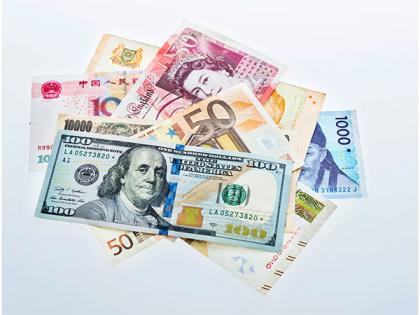India's forex reserves dip by USD 1.02 billion to USD 697.93 billion
By ANI | Updated: June 29, 2025 11:08 IST2025-06-29T11:04:40+5:302025-06-29T11:08:48+5:30
Mumbai (Maharashtra) [India], June 29 : India's foreign exchange reserves (forex) declined by USD 1.02 billion this week after ...

India's forex reserves dip by USD 1.02 billion to USD 697.93 billion
Mumbai (Maharashtra) [India], June 29 : India's foreign exchange reserves (forex) declined by USD 1.02 billion this week after extending gains in the previous week stabilising at USD 697.93 billion, official data released by the Reserve Bank of India showed.
The Forex extended their gains, jumping USD 2.294 billion to USD 698.950 billion in the week ending June 13.
As on June 20, the data shows that the foreign currency assets declined USD 0.36 billion to USD 589.07 billion.
Gold reserves were down by USD 5.73 million to stand at USD 85.74 billion during the week, the apex bank's data shows while the The special drawing rights were down USD 85 million to USD 18.67 billion.
Central banks worldwide increasingly accumulating safe-haven gold in their foreign exchange reserves kitty, and India is no exception. The share of gold maintained by the Reserve Bank of India (RBI) in its foreign exchange reserves has almost doubled since 2021, till recently.
In 2023, India added around USD 58 billion to its foreign exchange reserves, contrasting with a cumulative decline of USD 71 billion in 2022. In 2024, the reserves rose by a little over USD 20 billion.
India's foreign exchange reserves (Forex) are sufficient to meet 11 months of the country's imports and about 96 per cent of external debt, said Governor Sanjay Malhotra while announcing the outcome of the Monetary Policy Committee (MPC) decisions.
The RBI governor expressed confidence, stating that India's external sector is resilient and key external sector vulnerability indicators are improving.
Foreign exchange reserves, or FX reserves, are assets held by a nation's central bank or monetary authority, primarily in reserve currencies such as the US Dollar, with smaller portions in the Euro, Japanese Yen, and Pound Sterling.
The RBI often intervenes by managing liquidity, including selling dollars, to prevent steep Rupee depreciation. The RBI strategically buys dollars when the Rupee is strong and sells when it weakens.
Disclaimer: This post has been auto-published from an agency feed without any modifications to the text and has not been reviewed by an editor
Open in app